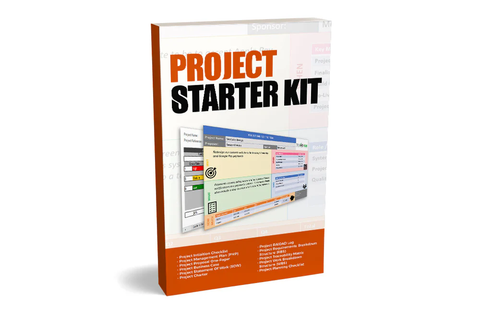Project Initiation Template Free Download
What Is The Project Initiation Phase?
Where to start a project? From the beginning, with the Project Initiation Phase. Regardless of the project management method being followed, projects tend to be broken down into phases since it is easier to manage small, defined chunks of work, one at a time, than trying to manage the full project as a single piece.
To meet the objectives above, there are several considerations that the project manager will need to address during project initiation, which can seem a daunting task for some. Fortunately for you, this article will guide you, highlighting which actions to do and which templates to use through the process:

The first of the project life cycle phases is usually called Project Initiation or Project Start-up. Because the initiation phase can mean different things to different organizations, a simple way to think of it is that it will cover everything that occurs before a project is approved and before detailed planning begins.
Purpose of Project Initiation Phase
The purpose of Initiation is to get the project off to the best start, by ensuring that the project meets at least the minimum standards to be considered and implemented by the organization. This involves understanding what the project is about, what is there to be gained by carrying out the project, if the project is feasible or not and, as important, aligning expectations around the project.
The Key Objectives of This Project Initiation Phase Are:
- To set up a project management environment that enables the project to be successful.
- To evaluate the benefits and feasibility of the project.
- To provide a solid justification for the project.
- To define the project’s objectives.
- To define the boundaries of the project.
- To define the management approach for the project.
- To identify the project team and other resources required.
- To align expectations and gain support from the project’ stakeholders.
What is Project Initiation Documentation?
A Project Initiation Documentation (PID) is for PRINCE2 (Projects in Controlled Environments, the method for managing projects developed and used extensively by the UK government), what a Project Charter is for the PMBOK Guide: the backbone of a project, summarizing what the project is and is not about and providing a way for the project to be authorized in the organization.

Project Initiation Documentation Composition
- Objectives of the project.
- Business case.
- Expected benefits.
- Project scope.
- Project timeline.
- Project Budget.
- Project approach.
- Project Organization.
- Quality Management Strategy.
- Configuration Management Strategy.
- Risk Management Strategy.
- Project Controls.
Why Do You Need a Project Initiation Document?
The PID is one of the most important artifacts in the project because:
- It ensures that everyone in the project shares the same understanding of the project.
- It reassures your key stakeholders that you know what you are doing.
- It provides a reference point and guidance for your team.
- It serves as a baseline for scope, schedule, and budget.
- It clarifies what approach is going to be followed.
- It defines what good looks like for the project to be deemed successful.
How To Write An Effective PID?
An effective PID is the one that clearly answers the Why, What, When Who, How much, and What-if of the project. Here are some tips on how to write the best PID ever:
- Consult your key stakeholders: Don’t leave them out of the loop, your project team, and other departments in the organization (e.g. Finance, Procurement) may provide important inputs.
- Be specific: A PID can be quite comprehensive thus it is likely that your project board will lose interest after the second page; try to go straight to the point and use concise, specific language.
- Don’t reinvent the wheel: If there is an established approach in the organization for how risks or quality is managed in projects, there is no need to re-write it in your PID, simply reference it explaining what is different or has been tailored in your project.
- Put yourself in their shoes: What information does your Project Board need to make a decision on the project? Be as realistic and accurate as possible.
- Get the PID signed-off: This may sound like a no-brainer but the main reason for having a PID is actually to get the project recognized and authorized thus remember to ask for sign-off as soon as possible since approvals always take time.
Other Project Initiation Template You May Be Interested In
- Project Proposal Template
- Statement of Work Word Template
- Request for Proposal Template
- Project Vendor Selection Process Template
- Project Options Paper Template
- Business Case
- Project Scope Statement
- Project Success Criteria Template
- Project Charter Template / Project Brief Template
- RACI Matrix Template
- Project Kick-off Meeting Agenda PPT Template




